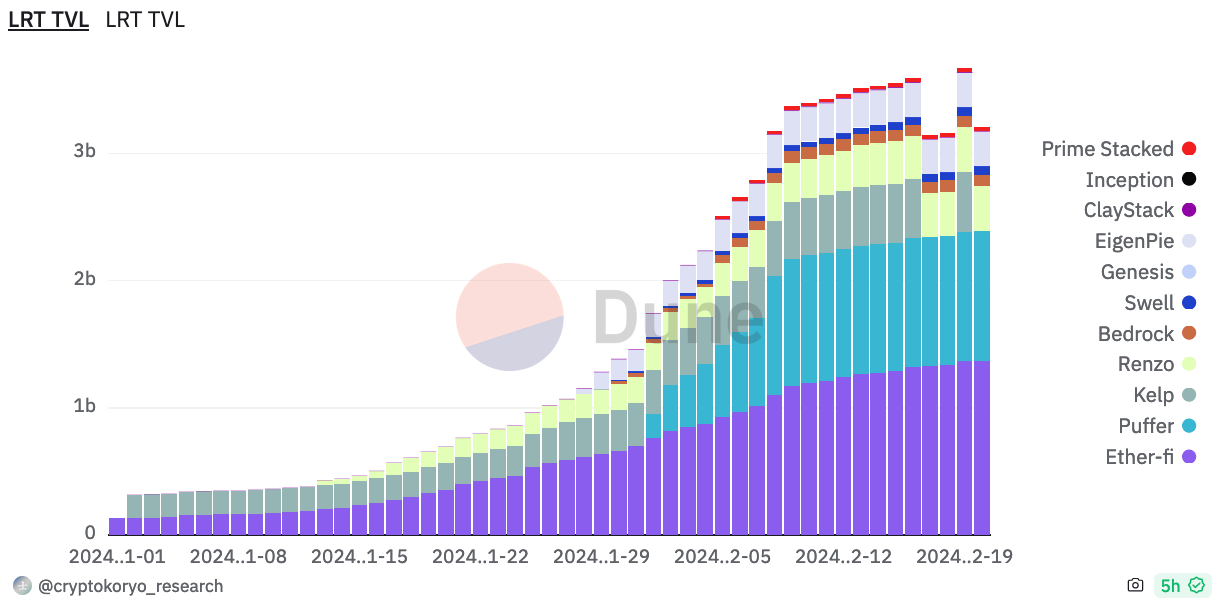A millefeuille on Ethereum. For several months, a new phenomenon has taken Ethereum by storm: the restaking. This new process unleashes all the passions, both from its defenders and its detractors. At the same time, the concept of LRT (Liquid Restaking Token) has emerged and has now reached a TVL of $3.6 billion.
Restaking and Liquid Restaking
Last June, the protocol EigenLayer opened on Ethereum. In practice, EigenLayer is a protocol of restaking. This means that he allows ETH deposited there to be used to secure other blockchains or protocols.
Thus, when a user deposits ETH in staking on EigenLayer, these are available to other protocols which are able to rent them to secure their network.
In practice, EigenLayer offers two services:
- Native Restaking : which allows you to deposit ETH in restaking;
- Restaking Liquid : which allows you to deposit Liquid Staking Tokens such as stETH, swETH or even rETH to name a few.
Like what happened in the field of staking, with the arrival of Liquid Staking, many protocols wanted to make restaking deposits more liquid. This is how the LRT for Liquid Restaking Tokens.
These allow Liquid Staking tokens to be deposited in restaking and to obtain an LRT token in exchange, which can then be reused on DeFi.
Obviously, this succession of layers and the levers they allow puzzle many users and fervent defenders of Ethereum.
Liquid Restaking: a $3.6 billion market
In less than two months, Liquid Restaking has become an unavoidable phenomenon. Thus, all of the protocols that offer LRT now have a TVL of $3.6 billion.

At the top, we find EtherFi and Puffer with $1.36 billion and $1 billion in TVL, respectively. They are followed by KelpRenzo, Bedrock and Swell.
At the start of the year, only EtherFi and Kelp offered this type of service. Now, there are more than ten Liquid Restaking protocols.
But where does such enthusiasm come from? The answer is simple: the airdrops.
Indeed, most of these projects have a points system in place to quantify the activity of each user in anticipation of an airdrop. In addition to this, they also allow you to obtain EigenLayer points, also in anticipation of an airdrop.
In addition, many users play the lending loop game. Thus, the LRT obtained are deposited as collateral on lending protocols, to borrow ETH which will in turn be deposited as liquid restaking. As you will have understood, this has the effect of artificially increasing the figures for these protocols.
For his part, EigenLayer saw $1.6 billion growth in early February. Indeed, the protocol has reopened the doors to its restaking for a few weeks, generating a significant influx of ETH.
